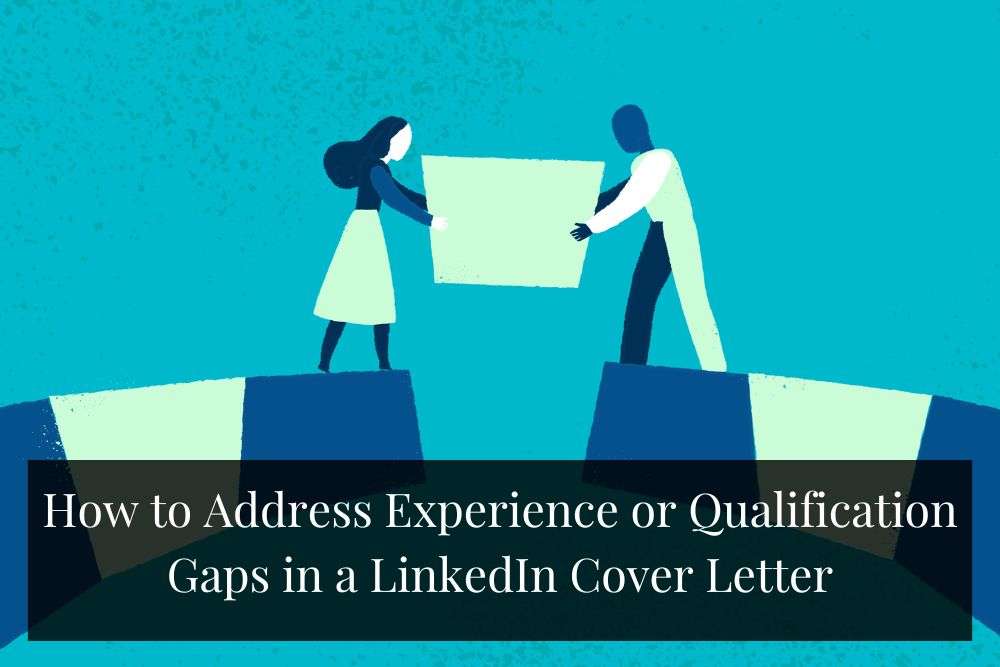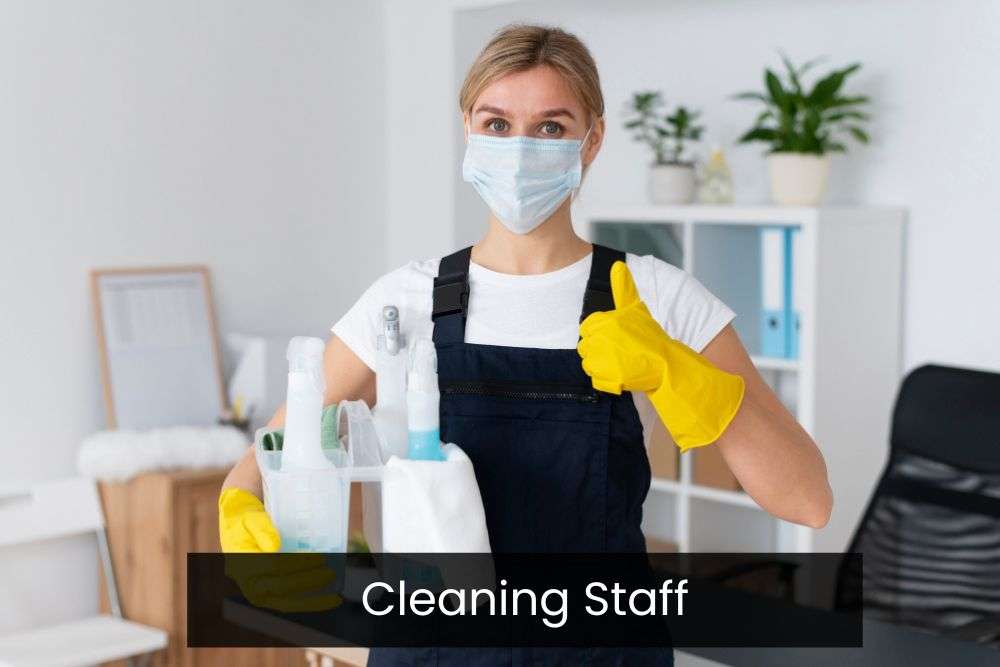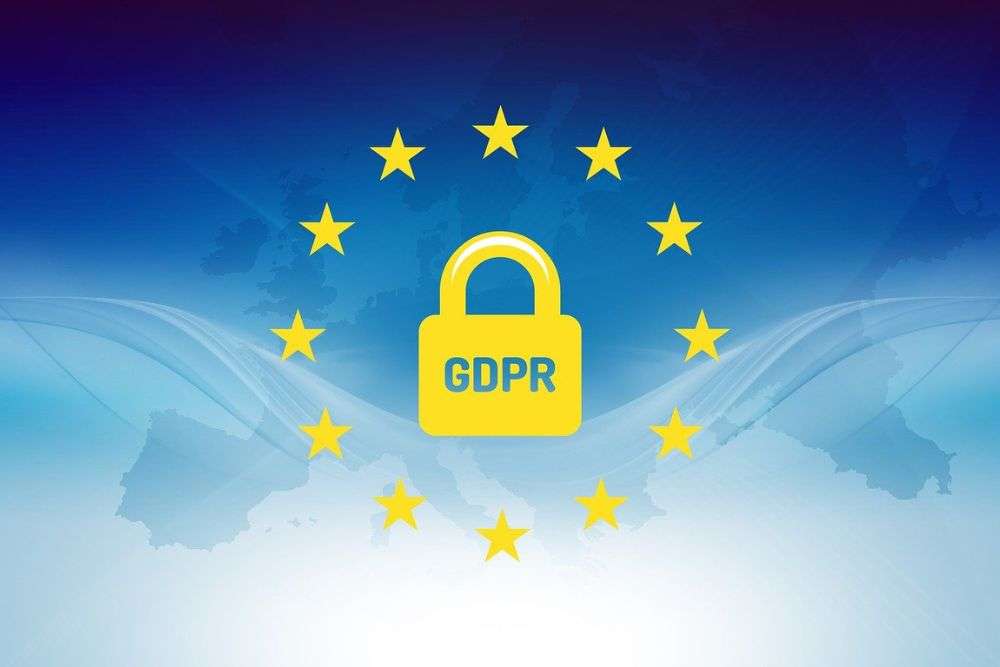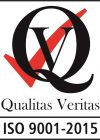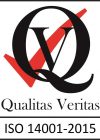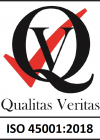In today’s competitive job market, a LinkedIn cover letter holds immense importance when it comes to addressing experience or qualification gaps. It serves as a powerful medium through which you can strategically present yourself to potential employers, emphasizing your strengths and mitigating any perceived gaps in your professional journey. By harnessing the potential of a well-crafted LinkedIn cover letter, you can enhance your chances of standing out and captivating the attention of hiring managers.
Navigating experience or qualification gaps can be a challenging task, but fear not! In this article, we provide you with a structured approach that will help you tackle these gaps effectively. By following this guidance, you can strategically position yourself as a strong candidate, focusing on relevant aspects of your profile that showcase your value and potential. Our aim is to equip you with the tools and insights necessary to craft a compelling LinkedIn cover letter that will capture the attention of recruiters and inspire them to consider your candidacy seriously.
Understanding the Target Job Description
A.Analyzing the job requirements and qualifications
When approaching a LinkedIn cover letter, it’s essential to thoroughly analyze the job requirements and qualifications stated in the job description. Dive deep into the details, dissecting each requirement and understanding the core competencies sought by the employer. Look beyond the surface-level requirements and try to grasp the underlying skills, experiences, and traits that the employer is looking for.
B.Identifying the key skills and experiences sought by the employer
As you analyze the job description, identify the key skills and experiences that the employer emphasizes. These are the qualities they consider most important for the role. Pay attention to both technical skills and soft skills, as they play a significant role in shaping the ideal candidate profile. Look for patterns or recurring themes that emerge throughout the job description, as this can provide insights into the employer’s priorities.
C.Highlighting any gaps in your experience or qualifications compared to the job description
Once you have a clear understanding of the job requirements and the desired skills and experiences, assess your own background and qualifications. Identify any gaps that exist between your current profile and the ideal candidate profile outlined in the job description. These gaps may include specific technical skills, industry experience, or certifications. Recognizing these gaps is crucial because it allows you to proactively address them in your LinkedIn cover letter.
Note: It’s important to approach this section with a positive mindset. While you acknowledge the gaps in your experience or qualifications, focus on how you can bridge them rather than dwelling on limitations.
Emphasizing Transferable Skills
A.Identifying transferable skills from previous roles or experiences
When addressing experience or qualification gaps in your LinkedIn cover letter, it’s important to identify and highlight transferable skills from your previous roles or experiences. These are skills that may not be directly related to the target job but can still be valuable and applicable. Look beyond job titles and responsibilities and focus on the underlying abilities and competencies you have developed.
B.How these transferable skills can be aligned with the job requirements
Once you have identified your transferable skills, it’s crucial to explain how they align with the job requirements. Clearly articulate how these skills can be transferred and utilized in the target role. Draw connections between the experiences and responsibilities in your previous roles and the demands of the desired position. Emphasize how your transferable skills make you well-equipped to handle the challenges and contribute to the organization’s success.
C.Providing specific examples or achievements that demonstrate the application of transferable skills
To reinforce the value of your transferable skills, provide specific examples or achievements that demonstrate how you have successfully applied these skills in your previous roles or experiences. Share stories that highlight your ability to adapt, learn quickly, and deliver results in different contexts. Quantify your achievements whenever possible to showcase the impact of your transferable skills. By providing concrete evidence, you can effectively demonstrate your ability to excel in the target role despite any experience or qualification gaps.
Note: Crafting a compelling narrative around your transferable skills can make a significant impact on the reader and help mitigate any concerns regarding experience or qualification gaps.
Learn More Tips for Writing a Professional LinkedIn Cover Letter Here.
Showcasing Relevant Education or Training
A.Highlighting relevant educational background or certifications
In your LinkedIn cover letter, it is important to highlight any relevant educational background or certifications you have obtained. This could include degrees, diplomas, specialized courses, or certifications that are directly or indirectly related to the target role. By showcasing your educational achievements, you demonstrate your commitment to continuous learning and development.
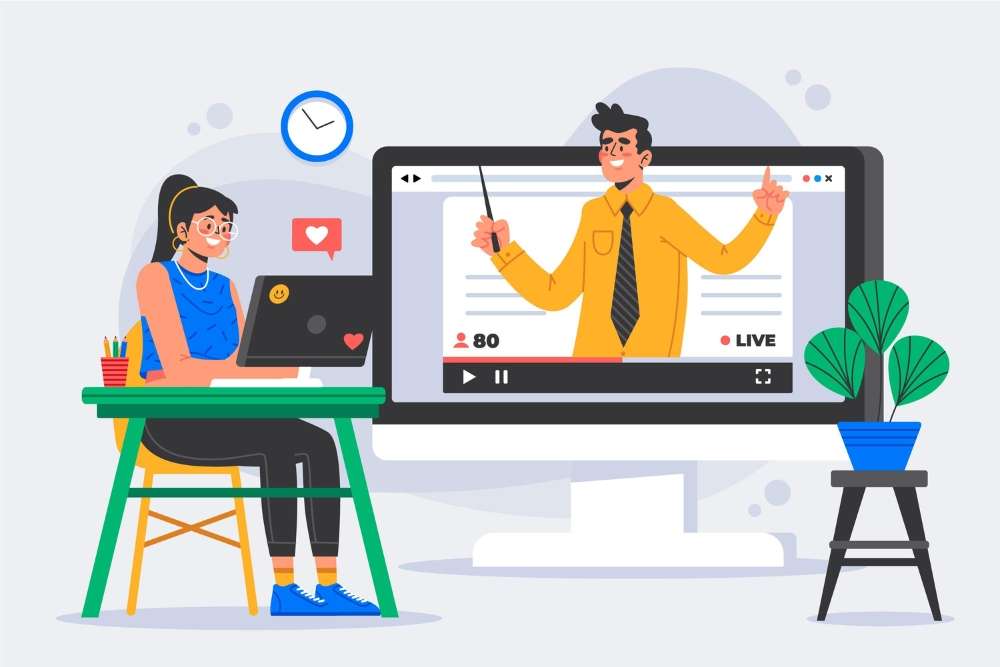
B.How the acquired knowledge can compensate for experience gaps
When addressing experience gaps, you can explain how the knowledge you acquired through your education or certifications compensates for those gaps. Highlight the specific subjects or topics you studied that are relevant to the target role. Emphasize how your educational background has equipped you with a solid foundation and a comprehensive understanding of the industry or field. By demonstrating your theoretical knowledge, you can illustrate your ability to quickly apply concepts and adapt to new challenges.
C.Demonstrating how the education or training has prepared you for the target role
Beyond compensating for experience gaps, it is essential to demonstrate how your education or training has directly prepared you for the target role. Share specific examples of projects, assignments, or research work that you completed during your studies, showcasing how these experiences have equipped you with the necessary skills and knowledge. Discuss any practical applications, internships, or cooperative education experiences that provided you with hands-on exposure to the industry. By demonstrating the practical relevance of your education or training, you establish yourself as a qualified candidate for the position.
Note: Presenting your relevant education or training in a compelling manner helps to strengthen your candidacy and instills confidence in the reader regarding your ability to excel in the target role, even if you may have experience gaps.
Highlighting Relevant Projects or Freelance Work
A.Discussing any relevant side projects, freelance work, or personal initiatives
In your LinkedIn cover letter, it’s important to discuss any relevant side projects, freelance work, or personal initiatives you have undertaken. These independent endeavors provide valuable opportunities to demonstrate your skills, initiative, and ability to take on projects outside of traditional employment. Highlight projects that align with the target role, showcasing your proactive approach to expanding your expertise and gaining practical experience.
B.Explaining how these projects have contributed to your skills and knowledge
When discussing your relevant projects or freelance work, explain how these experiences have contributed to your skills and knowledge. Share specific details about the tasks you undertook, the challenges you faced, and the outcomes you achieved. Discuss how these experiences allowed you to develop and refine your skills in areas relevant to the target role. Emphasize any new techniques, tools, or methodologies you learned and how they have enhanced your abilities.
C.Showing how the experience gained from these projects can be applied to the target role
To demonstrate the applicability of your project experiences to the target role, draw clear connections between the skills and knowledge gained from your projects and the requirements of the desired position. Showcase how the lessons learned, problem-solving approaches, and industry insights gained from these experiences directly align with the demands of the job. Provide concrete examples that highlight how your project experiences have prepared you to excel in the target role and contribute to the organization’s success.
Note: Highlighting relevant projects or freelance work allows you to showcase your initiative, resourcefulness, and ability to apply your skills in real-world settings. It provides evidence of your practical expertise and can help compensate for any experience or qualification gaps in a compelling and tangible way.
Addressing Gaps in Work Experience
A.Acknowledging any gaps in your work history
When addressing gaps in your work experience within your LinkedIn cover letter, it’s important to acknowledge them openly and transparently. By acknowledging the gaps, you demonstrate honesty and authenticity, which can positively impact the reader’s perception of your application. Avoid glossing over or attempting to conceal the gaps, as it may raise questions or create uncertainty.
B.Providing a brief explanation for the gap, if necessary
If a brief explanation for the work gap is necessary, provide one in a concise and straightforward manner. It could be due to personal reasons, career exploration, further education, or any other legitimate reason. Be honest but avoid dwelling on the reasons excessively. Instead, focus on how you have utilized the gap period productively to enhance your skills, knowledge, or personal development.
C.Highlighting any relevant activities or accomplishments during the gap period
To mitigate any concerns related to work gaps, highlight any relevant activities or accomplishments you undertook during that period. These activities could include volunteer work, freelancing, consulting, independent projects, or participation in industry-related events or organizations. Discuss how these experiences allowed you to develop new skills, gain valuable insights, or contribute to the community. By showcasing your engagement and initiative, you demonstrate that you have remained active and proactive despite the gap in traditional employment.
Note: Addressing gaps in work experience with honesty, providing a brief explanation if necessary, and highlighting relevant activities or accomplishments during the gap period can help alleviate any concerns the reader may have. It allows you to emphasize your continuous growth, adaptability, and commitment to professional development.
Leveraging Networking and Referrals
A.Mentioning any connections within the company or industry
In your LinkedIn cover letter, take the opportunity to mention any connections you have within the company or industry. Networking is a valuable asset, and having established relationships can work in your favor. Briefly mention the individuals you know, whether they are current or former colleagues, industry professionals, or contacts you have made through networking events or online communities. Highlighting these connections demonstrates your engagement and involvement in the industry.
B.Discussing referrals or recommendations that can vouch for your abilities
If you have received referrals or recommendations from trusted sources, it’s important to discuss them in your cover letter. Referrals or recommendations provide third-party validation of your abilities and can help build credibility. Share any positive feedback you have received from colleagues, mentors, or supervisors. Discuss how these individuals have vouched for your skills, work ethic, or professional qualities. By leveraging these recommendations, you showcase that others in the industry recognize your potential.
C.Explaining how networking efforts can compensate for experience or qualification gaps
Networking efforts can play a significant role in compensating for experience or qualification gaps. Explain how your networking efforts have allowed you to gain valuable insights, knowledge, and exposure to industry trends and best practices. Discuss how engaging with industry professionals has expanded your network, provided learning opportunities, and allowed you to stay updated with the latest developments. Emphasize how networking has enabled you to tap into resources, mentorship, and learning experiences that have helped bridge any gaps and enhance your professional growth.
Note: Leveraging networking and referrals can enhance your application by demonstrating your involvement in the industry and gaining support from trusted sources. It showcases your ability to establish connections and leverage them to your advantage. Networking efforts can compensate for experience or qualification gaps by providing access to valuable resources, knowledge, and opportunities for professional development.
Learn More about How a Professional LinkedIn Cover Letter can land you a Job here.
Demonstrating Enthusiasm and Motivation
A.Expressing genuine interest and passion for the position
In your LinkedIn cover letter, it’s crucial to express your genuine interest and passion for the position you’re applying for. Convey your excitement about the opportunity to contribute to the company and make a meaningful impact. Share what specifically attracts you to the role, whether it’s the company’s mission, the industry, the potential for growth, or the chance to work with a talented team. By showcasing your enthusiasm, you demonstrate your commitment and dedication.
B.Explaining your willingness to learn and grow in the role
Emphasize your willingness to learn and grow in the role, even if you have experience or qualification gaps. Discuss your eagerness to acquire new skills, take on challenges, and adapt to new environments. Highlight your openness to feedback and your ability to embrace continuous improvement. By demonstrating your willingness to invest in your own development, you show that you are a motivated candidate who is committed to acquiring the necessary skills and knowledge to excel in the position.
C.Showing dedication to bridging any experience or qualification gaps through continuous improvement
Illustrate your dedication to bridging any experience or qualification gaps through continuous improvement. Discuss specific steps you have taken or plan to take to enhance your skills or knowledge in areas relevant to the role. This could include enrolling in relevant courses, participating in workshops or training programs, or seeking mentorship or guidance from industry professionals. By showcasing your proactive approach to self-improvement, you convey your commitment to addressing any gaps and becoming a valuable asset to the organization.
Note: Demonstrating enthusiasm and motivation in your LinkedIn cover letter can set you apart from other candidates. By expressing genuine interest, willingness to learn, and dedication to continuous improvement, you show that you are a driven individual who is eager to contribute and grow within the role. This can help mitigate any concerns related to experience or qualification gaps.
Conclusion
In conclusion, encourage the employer to review your LinkedIn profile for more comprehensive details about your qualifications, experiences, and accomplishments. Mention that your profile provides additional insights into your professional background, showcasing your work history, skills, endorsements, and recommendations. Provide a call-to-action for the employer to explore your LinkedIn profile to gain a more holistic understanding of your expertise and potential as a candidate.
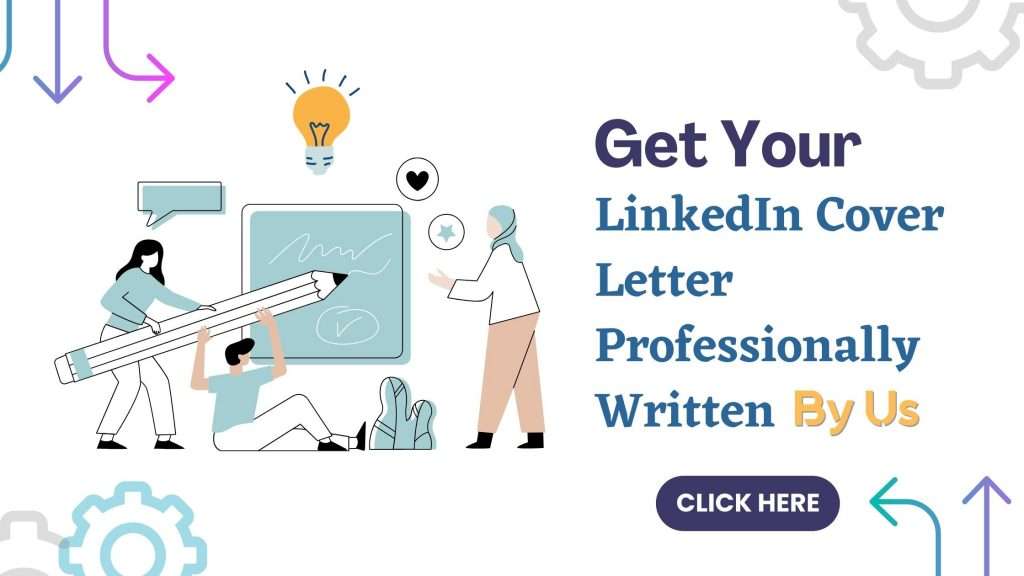
- What are some of the Common Mistakes to Avoid in a LinkedIn Cover Letter
- Tips for Writing a Professional LinkedIn Cover Letter
- How to Optimize Your LinkedIn Profile for Better Visibility
- How a Powerful LinkedIn Cover Letter Can Land You Any Job!
- Tempest Recruitment: Your Ultimate Staffing Solution and Learning Platform
Frequently Asked Questions (FAQs)
How can a LinkedIn cover letter help address experience or qualification gaps?
A well-crafted LinkedIn cover letter allows you to strategically showcase your relevant skills, achievements, and potential, effectively addressing any gaps in your experience or qualifications.
Should I explicitly mention my gaps in a LinkedIn cover letter?
It’s not necessary to explicitly mention your gaps. Instead, focus on highlighting your strengths, transferable skills, and relevant experiences that align with the desired role.
What should I do if I lack specific qualifications mentioned in the job description?
Emphasize your transferable skills and showcase how they align with the required qualifications. Additionally, highlight any relevant education, training, or projects that demonstrate your ability to excel in the role.
Can networking and referrals compensate for experience or qualification gaps?
Absolutely! Networking and referrals can play a significant role in mitigating gaps. Mention any connections within the company or industry, and discuss referrals or recommendations that vouch for your abilities and potential.
How do I demonstrate enthusiasm and motivation to compensate for gaps?
Express your genuine interest and passion for the position, and emphasize your willingness to learn and grow. Show dedication to bridging any gaps by actively pursuing continuous improvement and professional development opportunities.


